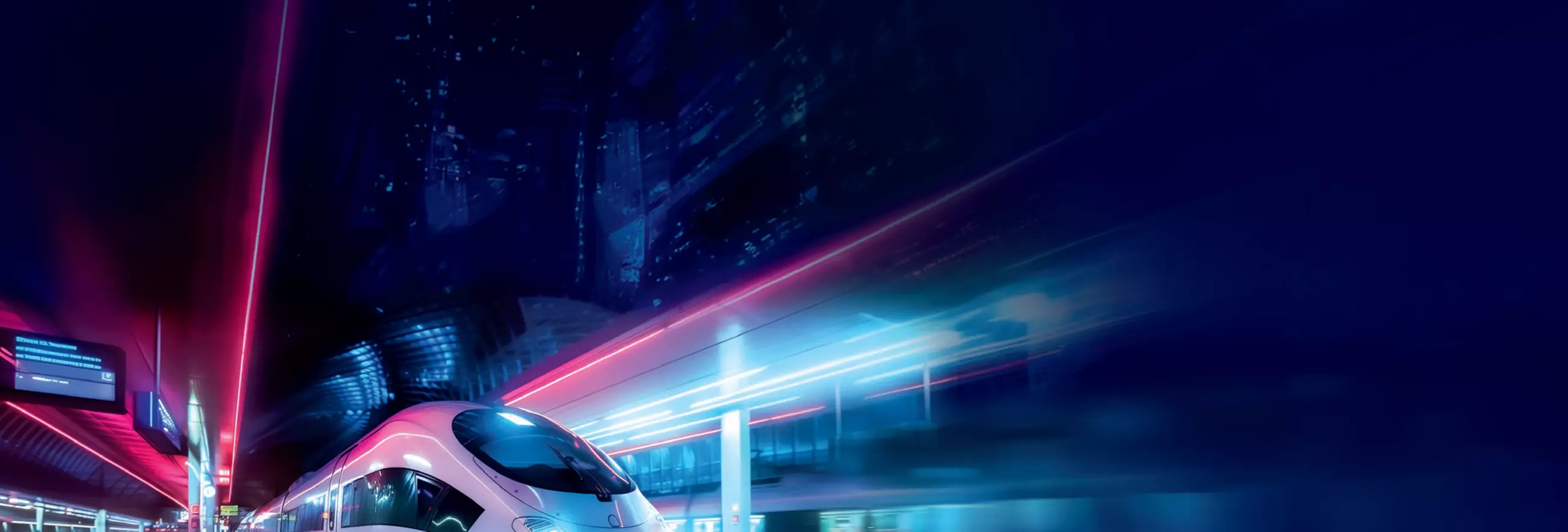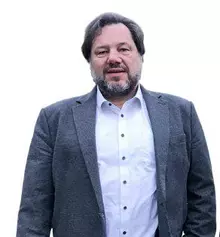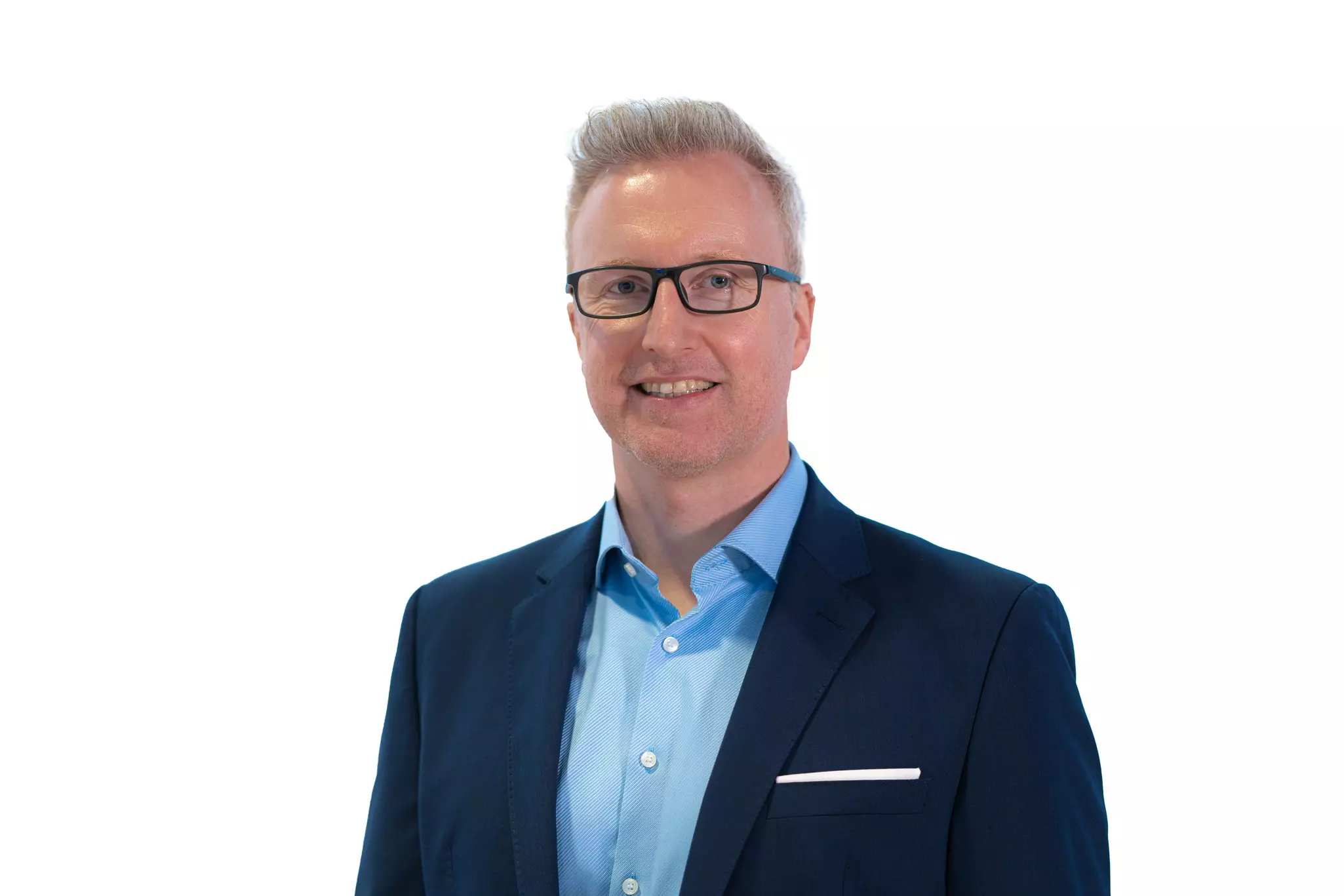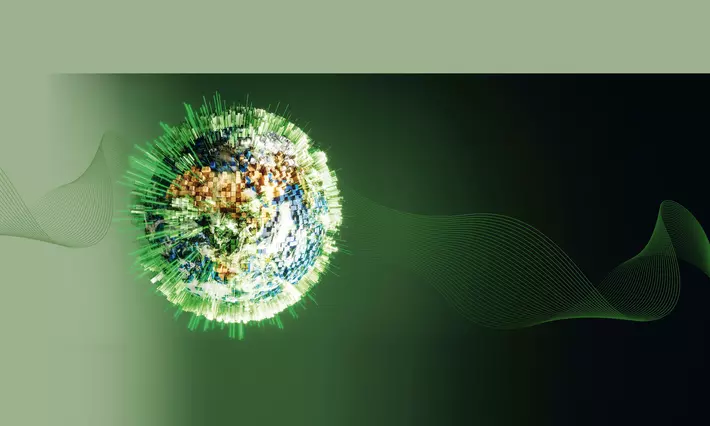Electrification is the most efficient means


Lars Müller
Position: Member of the Board of Rail Campus OWL e.V. and Head of Business Line Testing Services DB Systemtechnik GmbH

Dr. Daniel Nordsiek
Position: Director Innovation Hub in Minden
- Company: HARTING Technology Group
Dr. Daniel Nordsiek: The All Electric Society describes the vision of a CO2 neutral and sustainable world in which our energy supplies are essentially based on renewables. Does the AES play a role for the railway?
Dr. Lars Müller: The All Electric Society is anything but new for us. Railways have long been committed to comprehensive, area wide electrification. We have been travelling electrically for almost 150 years, and today around 2/3 of our journeys involve sustainably generated electricity. Only the electrified railways are fast, capable of transporting heavy goods and enable flexibility, which is why efficient modernised lines are generally electrified.
So power sources are an issue?
Dr. Lars Müller: I am convinced that the goal of generating sufficient energy from renewable sources is realistic. Many of our trains are already CO2-neutral, meaning that they run on electricity from renewable energy sources. But this power source is not always available – which means we need storage. Consequently, the problem is not how we generate the electricity, but how we store it.
To what extent is Deutsche Bahn already electric today?
Dr. Lars Müller: At present, a total of 61 per cent of the rail network is electrified, while 90 per cent of all train kilometres are already covered electrically, which is a large share as such. Specifically, the figure stands at 99 per cent for long-distance passenger transport, 97 per cent for freight transport and still at 81 per cent for local transport.*
These are the figures for Germany?
Dr. Lars Müller: Yes. The situation is different on the other sides of the border because the electricity grid in Europe is anything but uniform. Almost every country has its own voltage in the rail transport sector. And that is why only about half of the rail border crossings are equipped with an overhead line. Within Europe, Germany is positioned in the middle of the field in terms of the percentage of electrified railway lines; we are ahead of France, for example, but lagging behind Austria. That said, we are a huge player: If you look at the electrified kilometres of track, things look different again: we are the leader in Europe and the number five in the world**.
What strategies are there in Germany for further expansion? Are you focussing purely on the electrification of all routes, or are there several approaches being pursued?
Dr. Lars Müller: Let's start with the new track construction: Electrification is the obvious choice. There are, however, not so many new routes are being built. Consequently, expansion is the main driving force, i.e. retroactive electrification. We have set up programmes for this purpose: The aim is for 75 per cent of routes to be electrified by 2030. We want to step up our efforts above all in local transport, freight and works transport and the harbour railways. We are already on target in terms of long-distance transport.
What are the challenges when dealing with traction current?
Dr. Lars Müller: Traction current is operated with alternating current and has a contact wire voltage of 15 kV and a frequency of 16.7 Hertz. Transporting the electricity is an important issue, because I already use some of it in the grid. While the train is running, it uses the electricity. So we have to transport more than we consume. And that brings us to a challenge that impacts on the All Electric Society and on us as well of course: the issue of storage. We have to come to terms with the so-called dark doldrums outside of the summer months: In these periods, wind energy and photovoltaic systems supply either no electricity or only small amounts of electrical energy due to calm or weak winds and simultaneous darkness. However, this issue not only impacts on railway operations; it is a socio-political issue that we will only be able to solve through joint efforts undertaken by politics, the business arena and research.
Battery storage technology would be a local solution for routes that are not electrified. What about battery-powered locomotives?
Dr. Lars Müller: Certainly, our battery-powered locomotives have conventional electricity stored on board, which is then consumed and recharged. Unlike in private households, however, it is not possible to store electricity during periods when there is a surplus of CO2 neutral electricity, as the electricity demand is too high for this. So we have no choice: We have to load, drive, load, drive.
Do digitalisation and a higher degree of automation also play a role in rail transport in order to make travelling more efficient and lower energy consumption in the process?
Dr. Lars Müller: The equivalent of energy-efficient driving, as we know it from automobiles and referred to there as "one-pedal driving", would be to let the train roll without applying braking energy, as even regenerative braking incurs certain losses. However, this would possibly be at the expense of punctuality. The task is to utilise possible time reserves during a train journey so as to be able to roll out. This means that before the train stops at the station, it is not slowed down, but allowed to coast. It would be even more efficient if the so-called journey time reserve was continuously indicated during the journey and the speed of the train was then reduced. This would save additional energy!
What potential does automatic train operation (ATO) have to offer?
Dr. Lars Müller: Automatic operation modes have clear advantages: Instead of coasting, I can lower the speed earlier and thereby become even more efficient. We currently have a project in Hamburg focussing on energy-saving operations with the digital S-Bahn. Another effect of ATO is punctuality: By removing the human factor, you become considerably more reliable. Reliability also means improving the ability to plan energy-optimised journeys, which is the only way we can drive at a slower pace and punctually with foresight. Consequently, efficiency and punctuality are not competing goals – in fact, they can reinforce each other thanks to ATO!
What are the major challenges when it comes to energy issues at the moment?
Dr. Lars Müller: For me, the biggest challenge is to transition away from fossil fuels and secure availability through long-term storage options. That would be the path to the All Electric Society. Optimisations within the electrical system makes less sense at present. The levers and screws at work there are too modest and incremental. The generation of energy and shifting away from fossil fuels - these are the big issues. Alternative fuels that are produced by way of CO2-neutral energy are one option for replacing diesel. Track electrification is the most efficient means of all options. But as always, you need funding for that. And you need the respective programmes, because routes will have to be closed for longer periods of time.
What are you expecting from HARTING?
Dr. Lars Müller: Like DB Systemtechnik GmbH, HARTING is a founding member of the RailCampus OWL in Minden and conducts research into innovative connection technology for railways as part of the German Research Centre for Future Mobility. DB Systemtechnik is trialling these new technologies and helping manufacturers to continuously improve them in going forward. Therefore, I think the course has been set for our partnership and I look forward to continuing our excellent collaboration.
tec.news: Mr Müller, thank you for the interview.
Sources:*https://www.allianz-pro-schiene.de/themen/infrastruktur/elektrifizierung-bahn/**https://de.wikipedia.org/wiki/Liste_der_Länder_nach_Eisenbahnnetz



